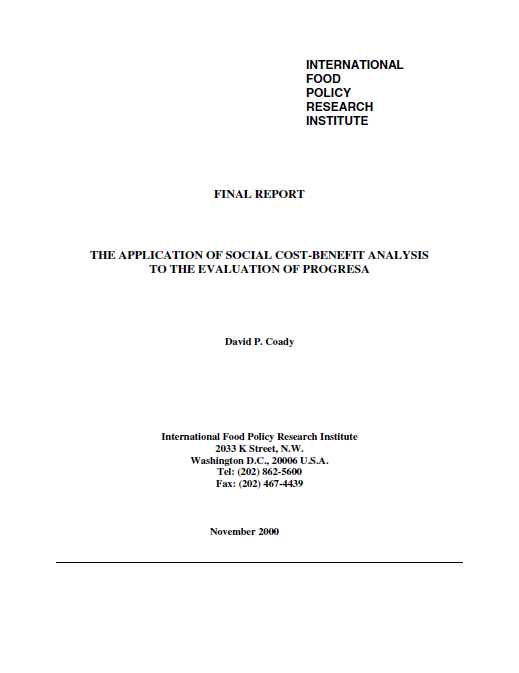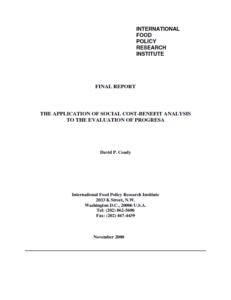Reports Database:
The Application of Social Cost-Benefit Analysis to the Evaluation of Progresa

 “In August 1997 the Mexican government introduced a key component of its overall development and poverty alleviation strategy, the PROGRESA program, in the most marginal rural areas of the country. The expansion of the program across localities took place in phases. By the final phase11 of the program in early 2000, the program included nearly 2.6 million families in 72,345 localities in all 31 states. This constitutes around 40% of all rural families and one ninth of all families in Mexico. The total annual budget of the program in 1999 was around $777 million, equivalent to just under 20% of the Federal poverty alleviation budget or 0.2% of GDP.
“In August 1997 the Mexican government introduced a key component of its overall development and poverty alleviation strategy, the PROGRESA program, in the most marginal rural areas of the country. The expansion of the program across localities took place in phases. By the final phase11 of the program in early 2000, the program included nearly 2.6 million families in 72,345 localities in all 31 states. This constitutes around 40% of all rural families and one ninth of all families in Mexico. The total annual budget of the program in 1999 was around $777 million, equivalent to just under 20% of the Federal poverty alleviation budget or 0.2% of GDP.
The program gives cash transfers to mothers in households classified as “poor”, these transfers being conditional on child attendance at school and regular visits by family members to health clinics for preventative check-ups. Households with young children also receive food supplements to improve their nutritional status. Although the program is essentially a demand-side intervention, an important dimension of the program involves the explicit recognition that, for such an intervention to be effective at achieving its ultimate objectives, co-ordination with the supply side is essential. To this end, the education and health ministries are expected to plan to allocate resources to areas where substantial demand increases are experienced in order to avoid deteriorating quality on the supply-side that may frustrate the achievement of program objectives.
In this report we are concerned with the application of a social cost-benefit analysis (SCBA) to PROGRESA. The application of SCBA to the evaluation of the program requires one to identify both the impacts and the costs of bringing about these impacts, and then to compare both of these to determine the overall welfare impact of the program and how effectively the program achieves these welfare impacts relative to alternative policy instruments. When monetary values can be attached to these impacts they are referred to as “program benefits” and the application of cost-benefit analysis (CBA) then involves determining whether benefits exceed costs and by how much. In the absence of a monetary valuation of impacts, one is restricted to the use of cost-effectiveness analysis (CEA), which identifies the cost of bringing about a given impact.”
